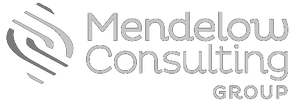 We tend to beat ourselves up. A lot. In a recent workshop with a group of highly intelligent, technical, and experienced professionals, we were talking about some of the polarities that are present in our lives. One person talked about “taking care of others and taking care of myself,” and another talked about “stepping in and stepping back.” One participant felt stumped. He was nearing the end of his career and was struggling to figure out the polarity or tension he was experiencing. He said, “being with or without direction.” That seemed pretty heavy, so I asked if he’d be open to digging in further. Here’s what we uncovered... What I first observed is that being “with” or “without” direction is not a polarity. This is viewing a situation from an “either/or” mindset, and he was viewing the potential downside of retirement as having “no direction” and feeling lost. He shared that, up until this point, his career was based on his drive, his passion, and his clear purpose. At this point, however, his drive was becoming fuzzy (or perhaps changing). He didn’t have the language for this new mindset that was emerging and could only see the drive (that he has now) or the absence of his drive (which he was anticipating after retirement). So, I asked if he’d be willing to let the class help him map out this polarity using a Polarity Map. He agreed. We began with discussing the upside to having a clear direction (e.g., it’s motivating, he sets clear goals and objectives, he can rally the troops, etc.). Then we moved to explore what happens when one over-focuses on having a clear direction. To which the group offered comments such as, “becoming too narrow-minded,” “always looking to the future,” and “not slowing down.” After that last comment, he nearly jumped out of his chair. “That’s it! It’s about me slowing down to appreciate what’s right in front of me.” He continued, “Actually, I don’t think it’s about direction. It’s about shifting my focus. I think my tension might be being planful and allowing for things to emerge.” We then talked about the downside of over-focusing on allowing things to emerge, which may result in chaos and complacency. This was his fear of what might happen once he retires. The conversation ended with ideas on how to leverage both during retirement, the upsides of being planful and the upsides of emergence. Also embedded in his comment was the weight of a heavy “should.” He said he felt he “should have a clear direction” even after retirement. He was asked the question daily by his co-workers, “So, what do you plan to do after you retire?” This was really weighing on him as if he should have a clear answer. At the March Chesapeake Bay Organization Development Network Book Club, Karen See facilitated a discussion of Michelle Obama’s Becoming through the framework of “shoulds” from The Should Syndrome. As Karen explained, “shoulds” are expectations (often unconscious) that we have of ourselves or others—which cause us to make choices that are inconsistent with who we are, and therefore get in the way of achieving our goals. Examples of “shoulds” include:
So what do you do with your “shoulds?” Karen advised us to observe them, name them, and reflect on the source. Some “shoulds” are aligned with our deeply held values and will help us reach our goals. Others are imposed or assumed—and can sometimes turn real ugly. A quick exercise is to write up your own list of “shoulds,” and then challenge yourself to play devil’s advocate with them. Show the “shoulds” who’s boss. You are, after all!
0 Comments
Your comment will be posted after it is approved.
Leave a Reply. |
AuthorLaura Mendelow |
|
|
©2020. All Rights Reserved. Mendelow Consulting Group, LLC.

